Sometimes, growing and maintaining a lush, green lawn can feel like a huge undertaking. Have you recently laid netting over the ground and want to mow but don't know if that's a good idea? Will the netting damage your lawn mower? Well, we've done some research and have the answers. Let's discuss!
Generally, as long as your lawn netting is close to the ground, you should be safe to mow over it. Most times, weeds will kick up sections of your net, which is when you want to either cut the area and remove it or push any lifted mesh back down.
Furthermore, you shouldn't see the netting your lawn has once the grass begins to grow, so if you do notice lifted sections, it's best to remove them.
As we begin, we will cover all things lawn nets and discuss whether or not it's safe to mow over them. Whether you recently applied the netting or it's been a while, we're here to offer some help. With that said, let's dive right into this post!
![lawn mower cutting grass in the field, Can You Mow Over Lawn Netting? [And What Kind To Use]](https://gardentabs.com/wp-content/uploads/2022/05/How-To-Remove-Fence-Post-Without-A-Jack.png)
Is It Safe To Mow Over Lawn Netting?
Yes, it is usually safe to mow over flat lawn netting. As we mentioned above, weeds can sometimes lift the net off the ground, causing it to peek out from your grass.
If this happens, make sure to get rid of the weed and the mesh section. Moreover, you can also push the netting back into the ground, although if greenery is showing, there isn't much need for it.
If you use a mower over lifted netting, it can get stuck and cause damage to your equipment. For that reason, you always want to inspect your lawn before turning on a mower to prevent issues from happening.
Furthermore, once your netting starts to degrade, it may lift in certain sections, and in that case, you want to grab a pair of scissors and cut it away.
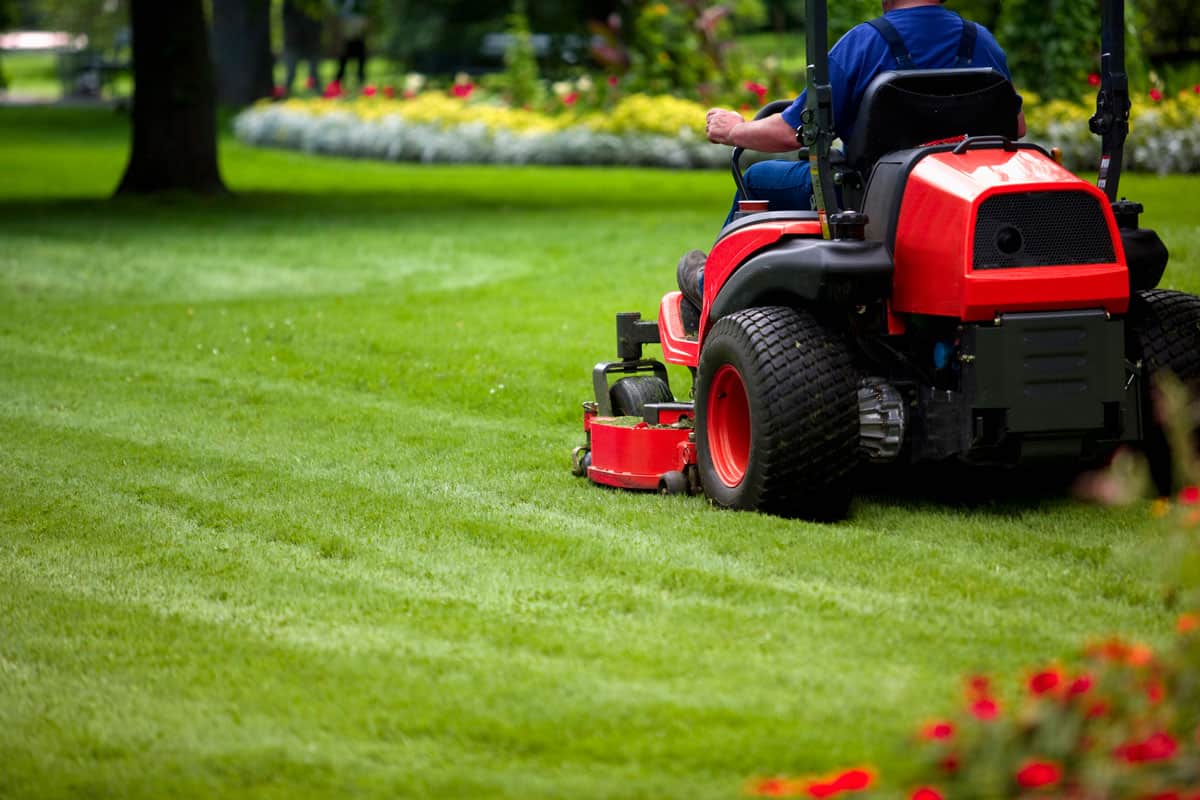
How Long Does It Take For Lawn Netting To Disentigrate?
Depending on the material and thickness of your netting, it could take up to three years to disintegrate fully. Of course, this will vary for everyone, so you may see your net decompose much faster.
Within the time it takes for your mesh to disintegrate, your lawn should grow strong enough to the point it doesn't need it. Environmental conditions can also affect how long netting takes to go away, so that's another factor to consider.
Considering that your netting will almost always be 100% biodegradable, there's no need to find it later on and remove it manually.
What Does Lawn Netting Do?
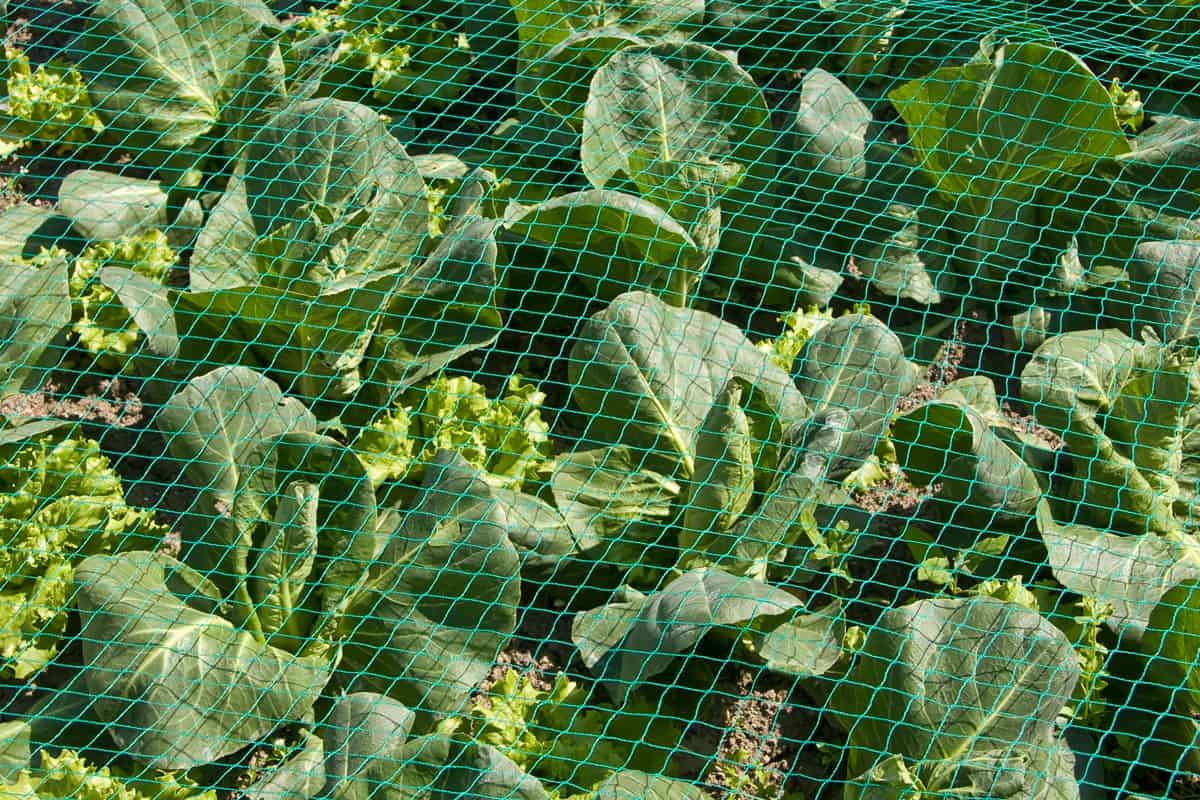
The primary function of lawn netting is to hold erosion-prone soil in place. Using mesh to keep the ground down allows grass to grow and form a strong, healthy root system.
For example, if your garden is on a slope, using netting can prevent mudslides from destroying your green grass. Even if you don't have grass, a net will assist in root development for any type of plant.
Furthermore, a lawn net safeguards the seeds as they germinate, so you should consider trying one if you want to see everything be successful in your yard.
As we said above, your netting will also decompose over time, so it isn't going to be an eye-sore forever.
What Is Lawn Netting Made Of?
One of the more commonly used materials for lawn netting is jute. Jute is a natural fiber that is strong and completely biodegradable. That is perfect for those wanting to prevent erosion while also protecting our Earth.
Another popular lawn net material is burlap coir, which is still a great option although not as popular as jute. Considering that coir comes from the outer shell of coconuts, this is a slightly rougher material versus jute but will still get the job done.
Additionally, burlap coir and coir blends are biodegradable, so that's nice to know. There are also plastic or 'poly' blends of lawn nets available, although they aren't as eco-friendly and take years to begin the decomposing process.
Is Lawn Netting Bad For The Environment?
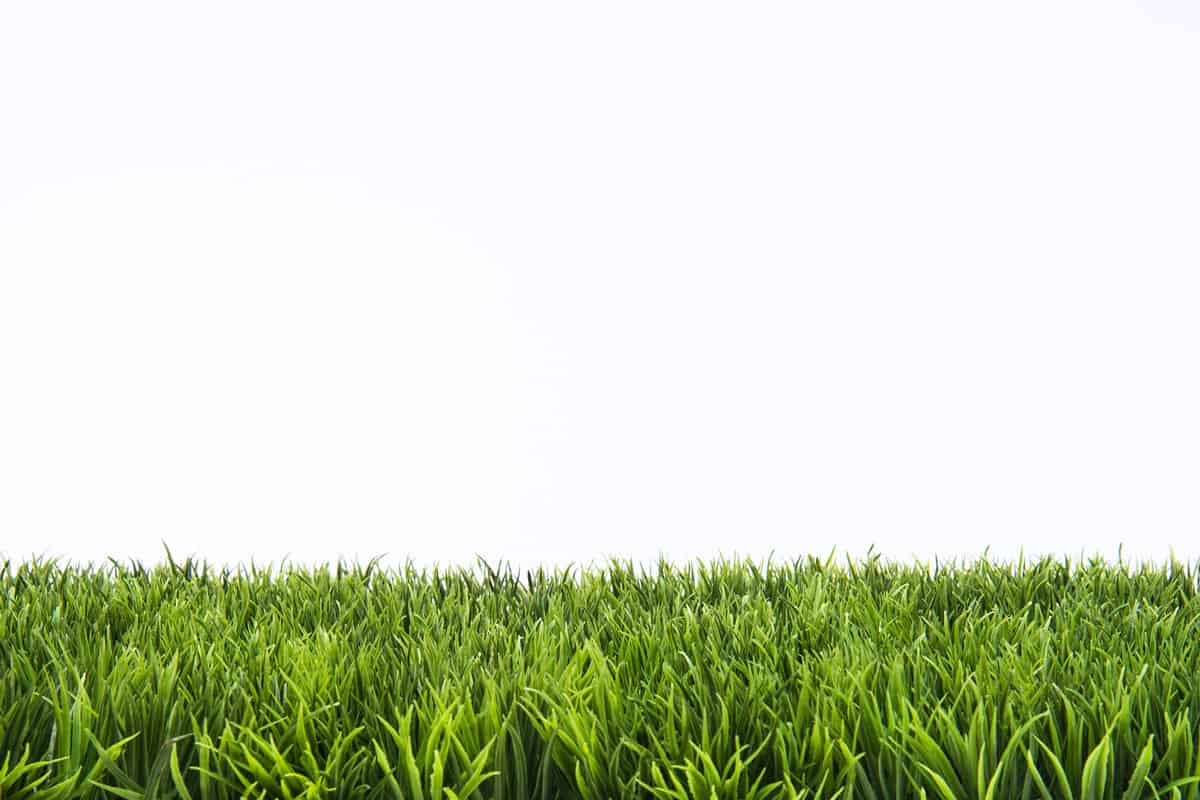
As long as the lawn netting you use is 100% biodegradable, it won't be bad for the environment. As we covered, jute and coir nets will decompose and are made with sustainable materials, making them perfect for eco-friendly households.
On the other hand, if the netting in your yard has plastic in it, that can be an issue. Even if your plastic-made lawn net claims it will decompose, that is not the same as being entirely biodegradable.
That essentially means there is a chance the plastic will break down in many years, but never 100%. In general, it's not the best idea to use anything that will stick around underneath your grass/plants, so stay away from plastic or poly-based netting if you can.
Sandbaggy Jute Netting
This jute netting is 100% biodegradable and eco-friendly, covers 225 square feet, is four feet wide, and comes in various size/bundle options.
View this jute netting in Amazon here.
How Soon Can You Mow After Laying Down Lawn Netting?
Generally, you want to wait to mow your newly netted lawn until about 7-8 weeks pass. As we covered, cutting too soon over mesh can damage your garden equipment, which nobody wants.
Additionally, many experts recommend waiting to mow new grass until it reaches roughly 3 ½ inches tall. Although you may want to keep your new lawn perfectly manicured, doing this too soon can harm it.
You can also wait to mow your lawn until you can no longer see any netting. This is a good idea for those who don't remember exactly when they put their net down and could be different for everyone.
Again, all plants will grow at unique rates, so you may be able to mow sooner than 7-8 weeks or might have to wait a bit longer. Regardless, it's essential to give your grass and net time to settle on/in the soil, so keep that in mind.
When Should I Remove Lawn Netting?
If you want to remove the netting from your lawn, try to wait eight weeks. Like mowing, you have to give your net enough time to secure the ground, allowing your grasses' roots to form.
On top of that, not all lawn netting needs to be removed. For example, if you purchase a biodegradable option, nature will remove it for you.
However, let's say you have straw or plastic netting. According to Lawn Care Lessons, you want to wait between four and five weeks or when your grass reaches three inches tall.
When you're ready to remove the netting, mow the grass 1-2 times. Next, dethatch or rake it to remove the excess straw mulch (for plastic, you can simply cut/lift it).
Any leftover material will decompose over the next few months for straw netting. On the other hand, plastic will not usually biodegrade, so we recommend being precise while removing it.
Is Lawn Netting Effective?
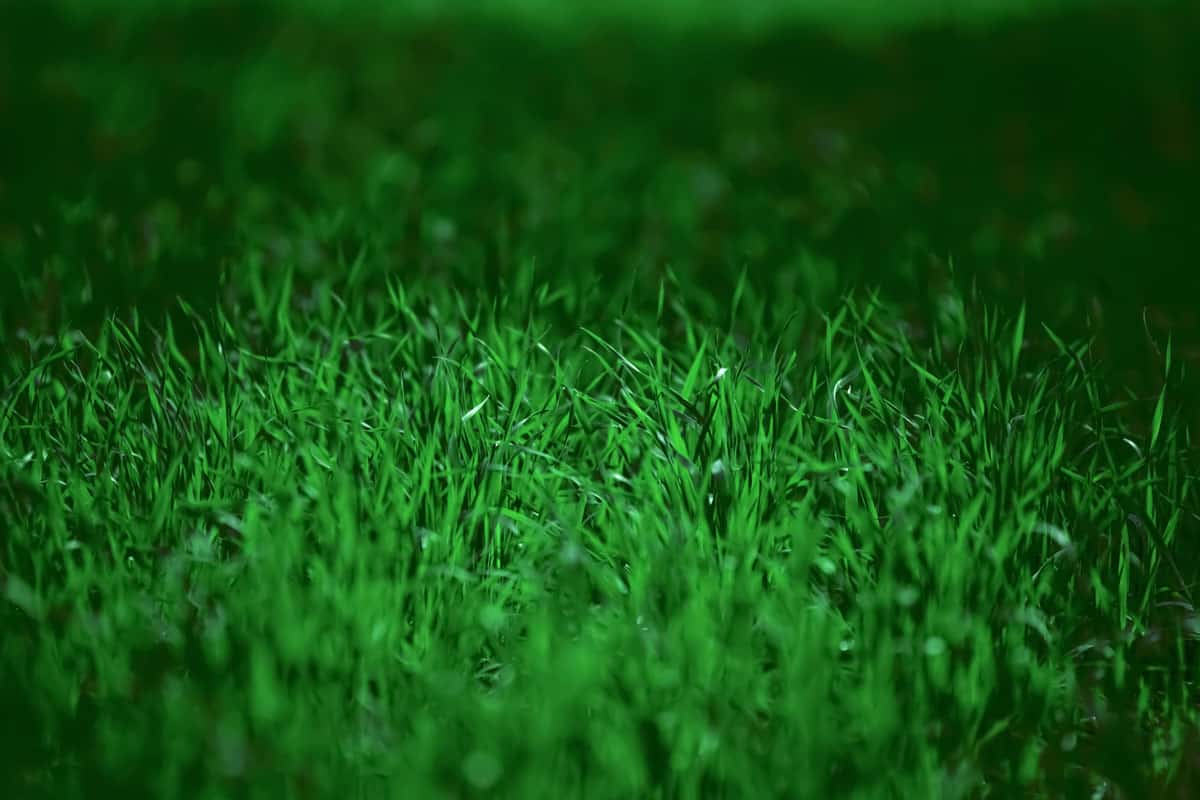
Yes, using netting for your lawn and garden can be super effective. Besides holding soil in place, having your seeds secure in the ground can make for a lusher, healthier landscape.
With that said, lawn netting isn't always needed. Typically, you only need to use this if your property is on a hill, at the base of a hill, or has a slope of some degree.
So if you live somewhere completely flat with moderate weather conditions, we don't see much need for lawn netting. Furthermore, windy places may benefit from a net or mesh, but again, it's not required.
The material you choose for your netting can also play a role in its effectiveness, so make sure to find one that is jute or coir. Plastic is not only bad for the Earth but can also suffocate your lawn, so it's best to find a natural alternative.
Does Lawn Netting Only Work With Seeds?
Yes, you only want to use lawn netting when planting grass seeds. Generally, you should start by laying your net down, then planting the seeds you wish to grow.
However, this order can depend on how thick your net is, so we recommend planting your seeds first if it's on the fuller side. You also want to make sure you lay the net down close to the soil.
Remember, weeds can lift lawn netting, which ultimately leaves the grass seeds at risk. Additionally, a raised net can get stuck in your lawn mower, so inspect the ground regularly.
To Finish Things Up
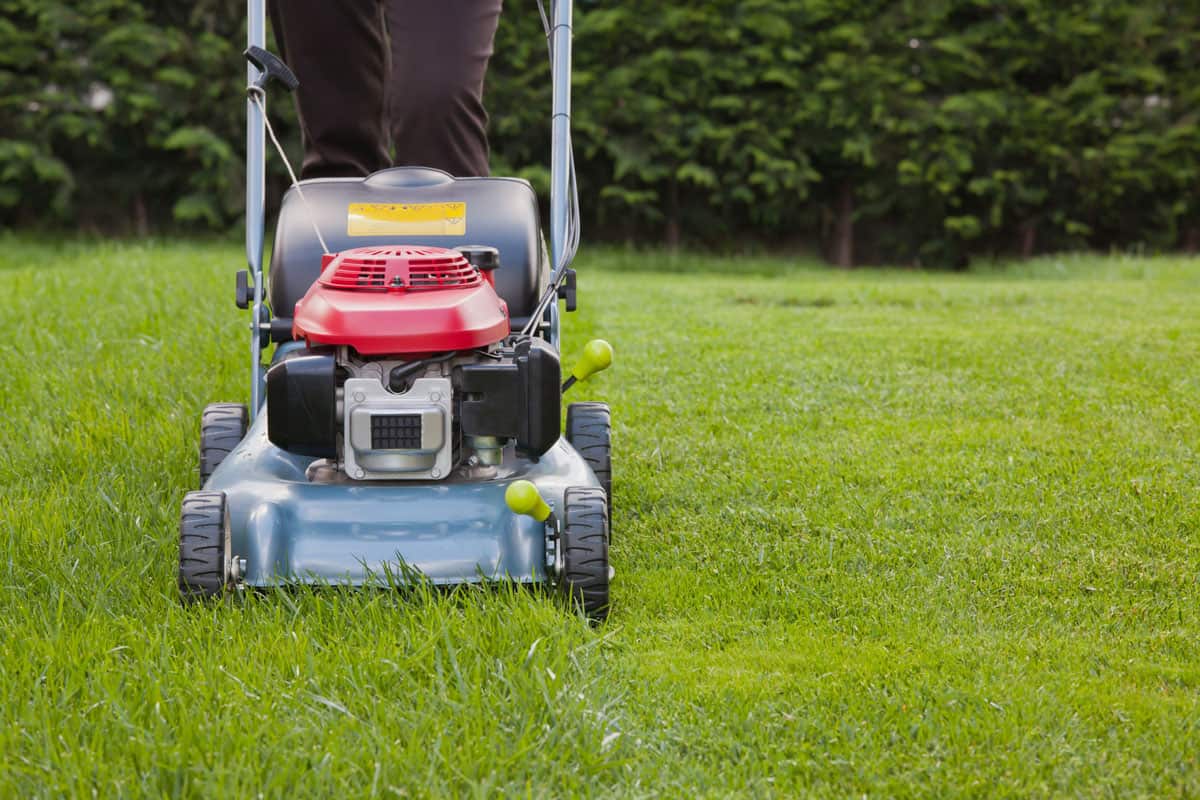
Whether you want to redo your entire yard or want to plant fresh grass, it's essential to know how to use lawn netting. From what we found, although you can mow over lawn netting, you want to wait between seven and eight weeks to do so.
You can also wait to mow until you no longer see the net or your grass is over three inches tall. It's always good to use a biodegradable material, which saves you the time of needing to remove it.
Regardless, remember to give your grass time to develop before mowing, and keep an eye out for eco-friendly coir or jute products!
Made it to the end? Check out these super helpful related posts below:
Should You Edge Your Lawn Or Mow First? [What You Need To Know]

